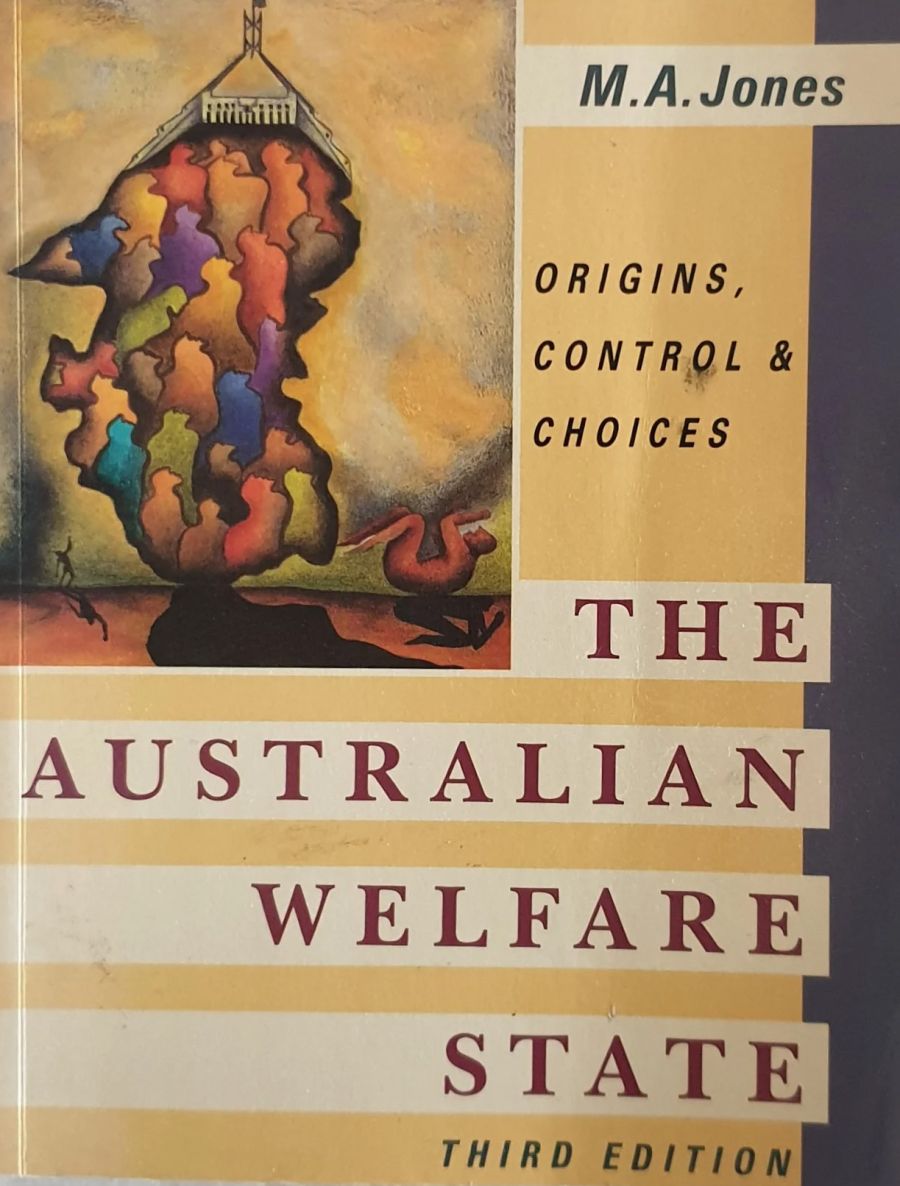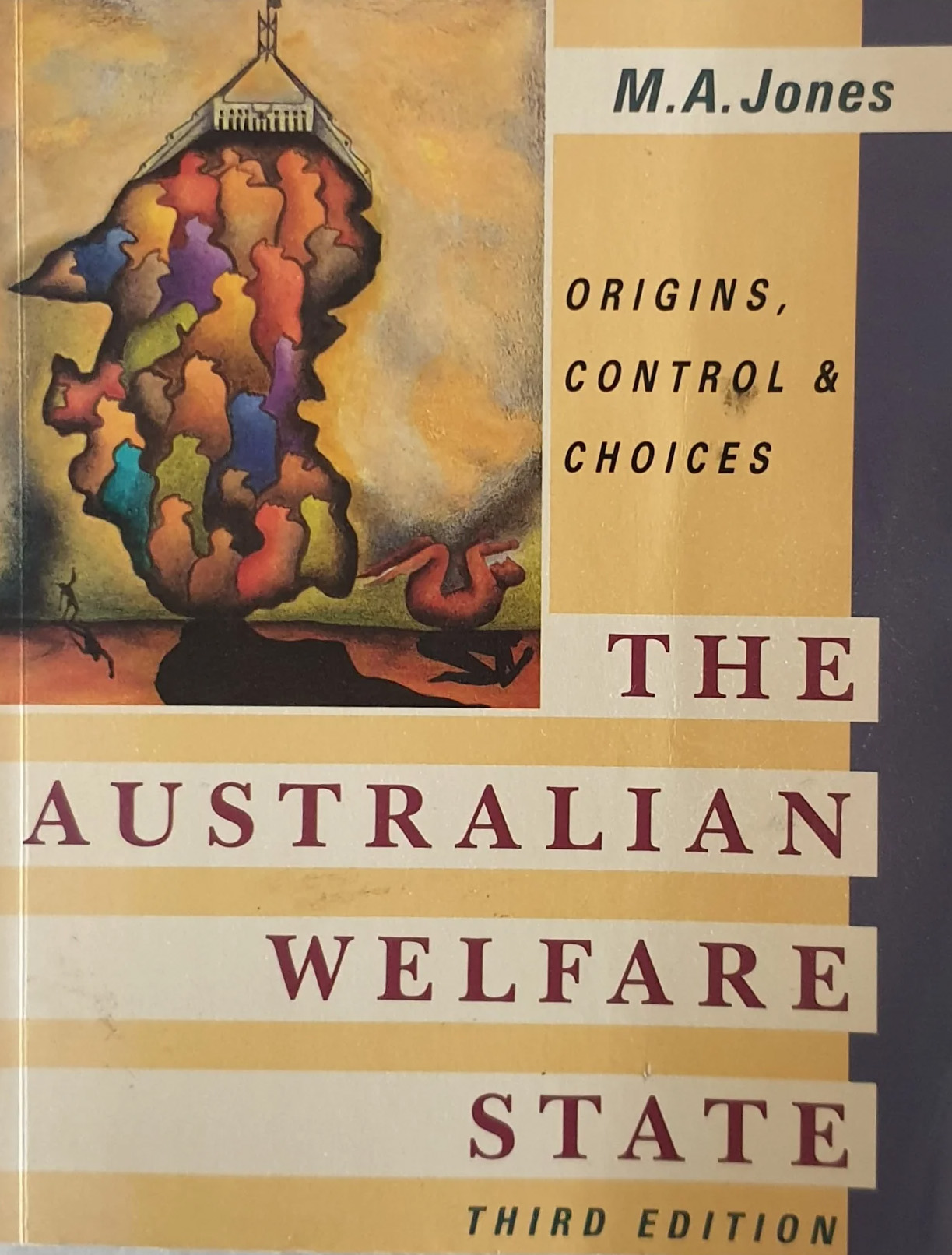
- Free Article: No
- Contents Category: Society
- Review Article: Yes
- Article Title: The Welfare State
- Online Only: No
- Custom Highlight Text:
Welfare in Australia has never been studied as comprehensively as one might have expected, given its political and economic importance. This book is the first major overall study of the welfare system since the work of T.H. Kewley.
- Book 1 Title: The Australian Welfare State
- Book 1 Biblio: Allen & Unwin, $10.95 pb, 244 pp
- Book 1 Cover Small (400 x 600):

- Book 1 Cover (800 x 1200):

Within the welfare system the book looks at the cash benefit system, general social security issues and policies, employment, health, housing and personal social services, thus providing a very comprehensive coverage of the so-called ‘welfare state’. All sections are well provided with data in simple usable tabular form and useful international comparisons are frequently provided.
Jones makes good use of recent material from the Henderson Report, various taxation reports and a good range of private research. Most of the data used are as recent as 1978. though this, of course, varies with availability.
The concept of the ‘welfare state' is a broader one than was found in earlier Australian literature on the subject. While Jones refrains from what he regards as the difficult task of defining the welfare state, from the outset he describes it in terms of basic social concerns such as individual security, health. learning, employment, quality of work life, time and leisure, command over goods and services, physical environment, personal safety and justice. But although these are used as reference foci for the rest of the book he retreats to the more conventional, and admittedly more convenient, method of classifying welfare concerns. Many of these issues are not looked at, therefore, the most important omission being education.
Early on in the book Jones bemoans the lack of systematic planning in Australian welfare, the consequent confusion in the system and the stagnation of welfare in the Menzies era. Yet he nowhere makes any substantial suggestions for better planning and in fact at times borders on a laissez faire attitude. He suggests, in one place, that government is ‘vain’ and that politicians and bureaucrats usually exaggerate the importance of formal government programmes. He comments derisively on the dominant role played by economists in the formation of welfare policy and their alleged penchant for bureaucratic schemes, yet he does not suggest who should be planning policies.
He severely criticises Medibank and some of Labor’s proposed schemes such as national superannuation, but with very little consideration of alternatives or whether we are better off under the present system. He favourably quotes work by Milton Friedman and other conservatives and partly attributes the failure of Medibank to the low cost of consultation, ignoring the substantial evidence now available that low cost does not, in the long run, cause significant over-use of medical facilities.
Despite the chapter on inequality, Jones has not really produced anything conclusive on the redistributive impact of welfare, especially since the advent of the Fraser Government. The redistributive effect of taxation is barely touched on despite the amount of material now available on the impact of the total tax system, which generally shows heavier taxation of low income people, with middle income earners being the most lightly taxed.
It is annoying that the publishers have not included any note on the author so that we have no clue to his identity. While status should not be a key to the value of the book it can be reassuring to know- the author's discipline area. The narrative suggests a strong sociological background and he provides some interesting interpretations of connections between Australian conservatism and low emphasis on welfare and other such issues. In all the book is a worthwhile reference.


Comments powered by CComment